Brian Donnelly: balance and harmony
In 1886 Alfred Gilbert was commissioned to create a memorial celebrating the life of Anthony Ashley-Cooper, the 7th Earl of Shaftesbury. Lord Shaftesbury was a philanthropist and believed heavily in social reform, campaigning passionately against various forms of injustice. The memorial took the form of a fountain in which an aluminium statue of Anteros, brother of Eros, primeval God of chaos emerges, triumphant and eloquent. Through continuous erroneous portrayals the statue has assumed the identity of Eros himself, and now situated at the southern end of Piccadilly Circus in central London, it has become the frenzied topic of study for Chester-based artist Brian Donnelly.
After an illustrious teaching career, Donnelly felt the time had come to break away from the day to day commitments of the job and focus exclusively on his art. "I loved teaching, and it was my privilege to head the faculty of arts at Liverpool College, where my remit was complete freedom to be creative. My students were noted for their extraordinary work and I became a keynote speaker nationally, helped hugely by the support from senior college management during my time there. From this, I was properly placed to fulfil my ambition as a full time artist, applying both the theory and knowledge of art to the practice of it in my studio. Eros was a great, and natural starting point".
"Seeing Eros stopped me in my tracks. I was arrested by it, as though a hinge was on my neck to look up and see the stars in the form of Eros; from then I was compelled to exhaust myself with what became a theme offering much more than mere visual appearances....and still this study is incomplete. In Eros Agape Eros (Fig 1) my concern was to depict the true meaning of Eros in both visual and literary responses. I found that rather than Eros representing the mistaken idea of gratuitous pleasure, which, typically, couples might enjoy on a sofa at the weekend, it embodies the Greek notion of Agape - selfless love - where Eros is on a spiritual path of ascending to discover the divine, and thus attaining the somewhat elusive goal.. the soul and material world in harmony".
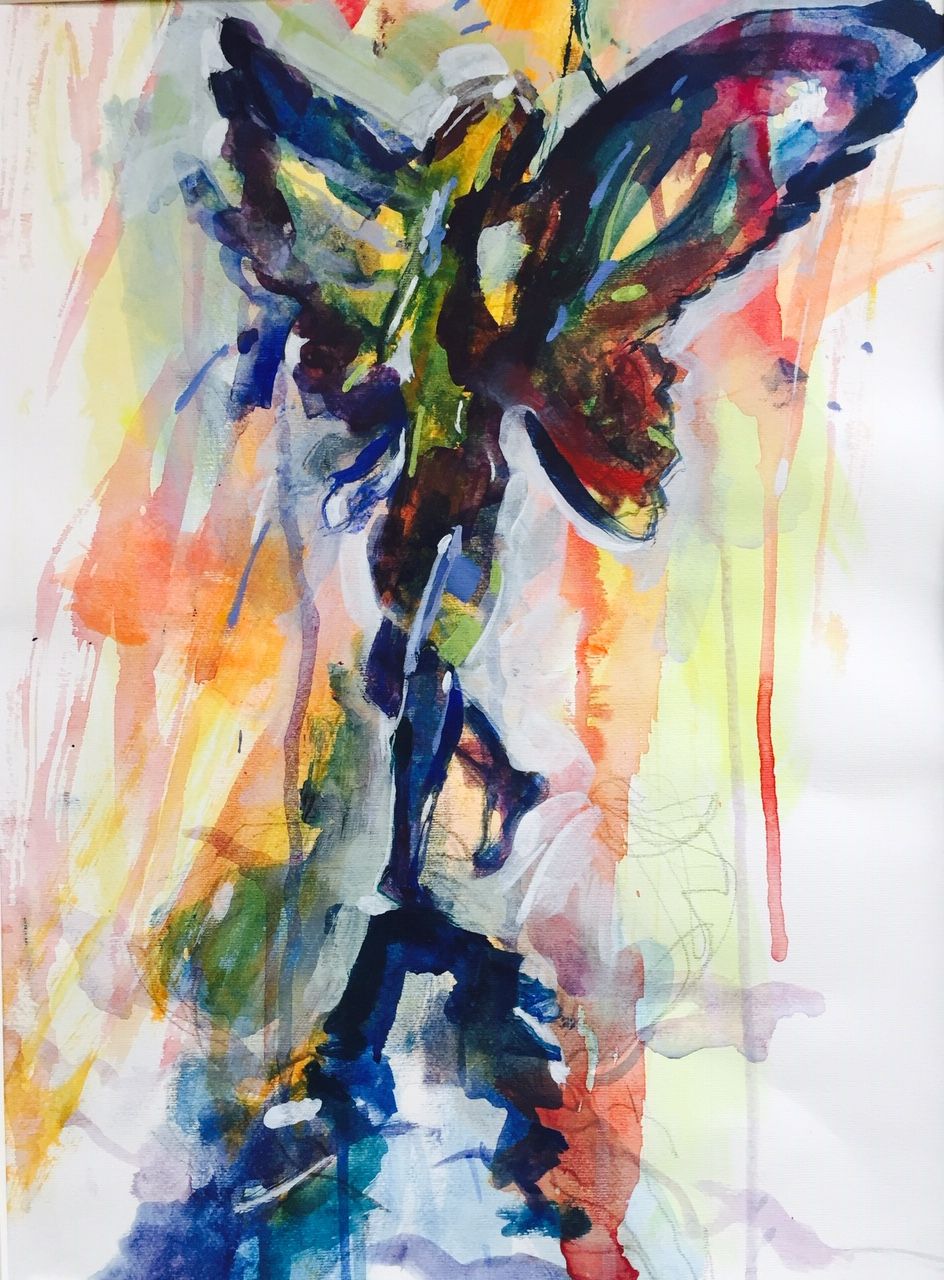
In talking to Donnelly to seek to understand the ideas that inform his work, it's clear that his intuitive relationship with aesthetics, gives rise to a world view built around poetics and beauty. Hogarth's Analysis of Beauty suggests through his six principles, that essentially, beauty is found in balance and harmony 'which leads the eye on a wanton kind of chase', this being, presumably, one of the key creative challenges the artist should address. It begs the question, how can he portray this through his craft? “Its importance is clearly vital when creating the surface area in a painting where all elements, however disparate, happily reside in what I would describe as a renaissance idea of unity and harmony". Cezanne, he reminds me, "was an exemplar of this, when every one of the thousands of brush strokes he made had to be just right. He cried if one wasn't".
By implication, control becomes an imperative to the work of Donnelly. In this respect, his technical understanding of the medium is backed up by a lifetime of familiarity with the history of art, both in its socio-cultural importance and its changing fashions; implicit in this is a degree of control. "My work is very expressive; it’s important therefore, for me to contain the energy and vital qualities I aim to create, without losing ‘The Magic’ therein to chaos....and equally... the potential restraints of excessive control".
Evidence of such balance and control can be seen in the ink series (fig 2) which allowed the artist to "capture Eros with rapid flowing lines. Klee says ‘take a line for a walk to find essence and order.. here I took it for a run.. I was also seeing the statue from another angle to reveal the dynamic qualities of it, moreover, to capture him on his trajectory to the divine above."
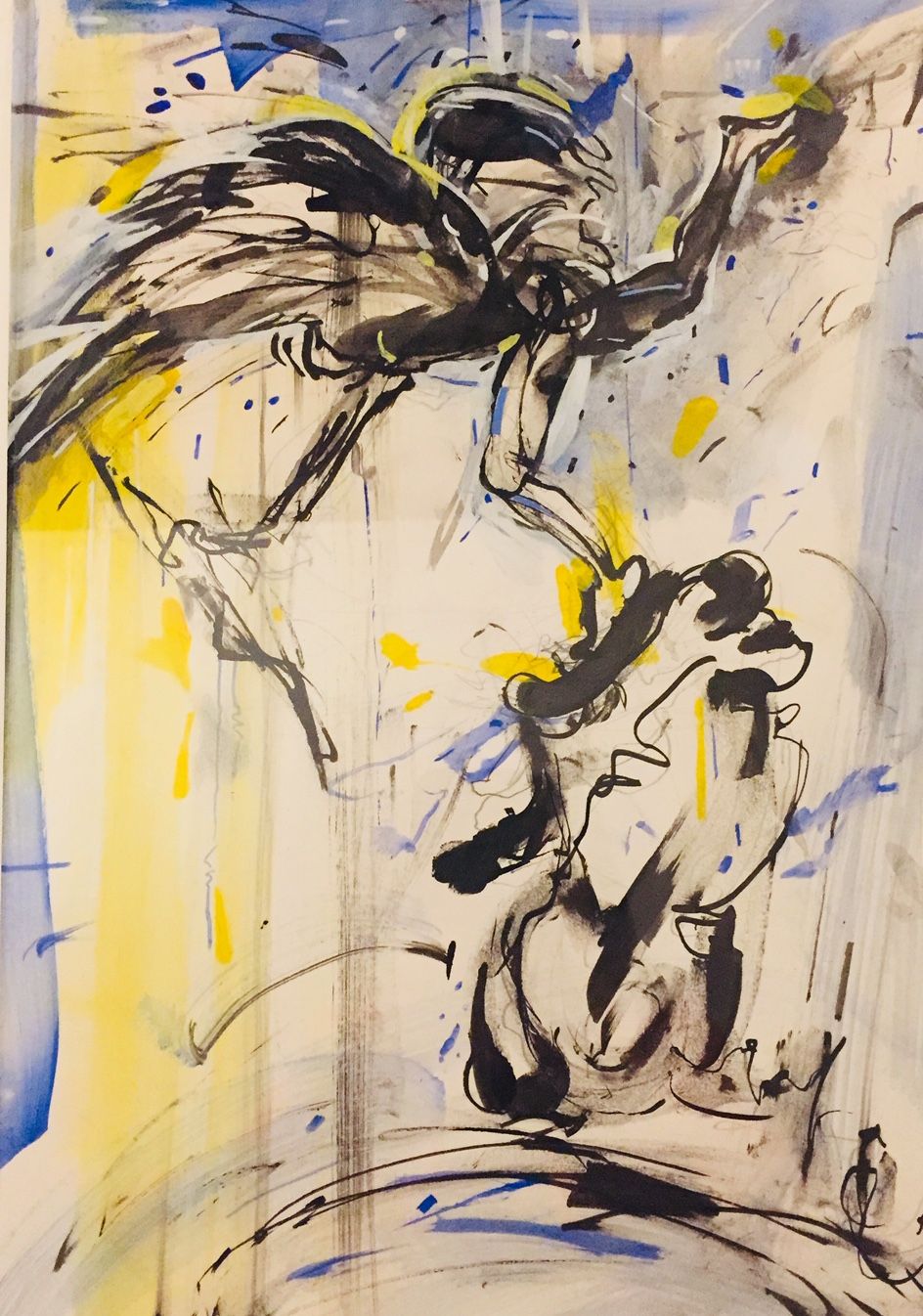
There is an undeniable degree of spontaneous and emotional painting in his work, but Donnelly's experience with handling the formal elements ensures an exciting but equally resolved outcome. The artist is keen to point out that it is the exploration of self that roots his latest work. Painting as a journey of self discovery is not however a throw away platitude. For Donnelly, whose training matured at the Munich Academy of Art, the notion carries tangible consequences. "Self discovery on deeper levels through art and my painting is when, by the creative process.... experiments, failures and ultimately the resolution surfaces to reveal new things about oneself hitherto unknown".
In seeking to understand himself through his art, he inevitably seeks to better himself. The support of his family, notably, his sister Maria, has been an important element in fuelling the confidence to keep going, to keep striving, to keep believing in the work. Demonstrating to his family the wholesome virtues in his art and how they have shaped him as a useful person in society are fundamental aspects of his philosophy.
Over coffee I venture that Donnelly's preferred painting medium is abstract, that his exploration of painting as a meditative practice towards self awareness and transformation has ultimately lead him to using abstract painting as a means of psychological mapping. "I appreciate pure abstraction. Its vital role in art was, in a radical sense of it, to detonate ‘modern thinking’. In my Eros works, abstraction plays its part, for example....when I aim to create a salad of beautiful brushstrokes and colour. Yet, equally, I make strong reference to the classical depiction of the human figure, a very current cultural trend in painting".
We can certainly agree that his images are meant to convey personal, mental and emotional states through representations rather than literal depictions of the real physical world. Donnelly's ideas often breed other exciting strands, a scenario perpetuated by his undoubted love of art and the craft of painting. In figure 3 his work transcends its obvious aesthetic beauty to explore the social and commercial issues of our time. He's keen to point out this is done "visually and with poetic responses, eg. Eros at night....made silhouetted and diminished by overwhelming neons of the blindingly iridescent - signs, screaming: Coca Cola!.. BMW!.. Clarins!.. Gap!.. et al.. and by day, tourists, lunchers and indifferent shoppers on the plinth steps, unaware of the statue above". The resulting painting is undoubtedly an expressive style that makes use of figurative images to demonstrate the crass face of consumerism Eros is surrounded, and one can't help but feel, injured by.
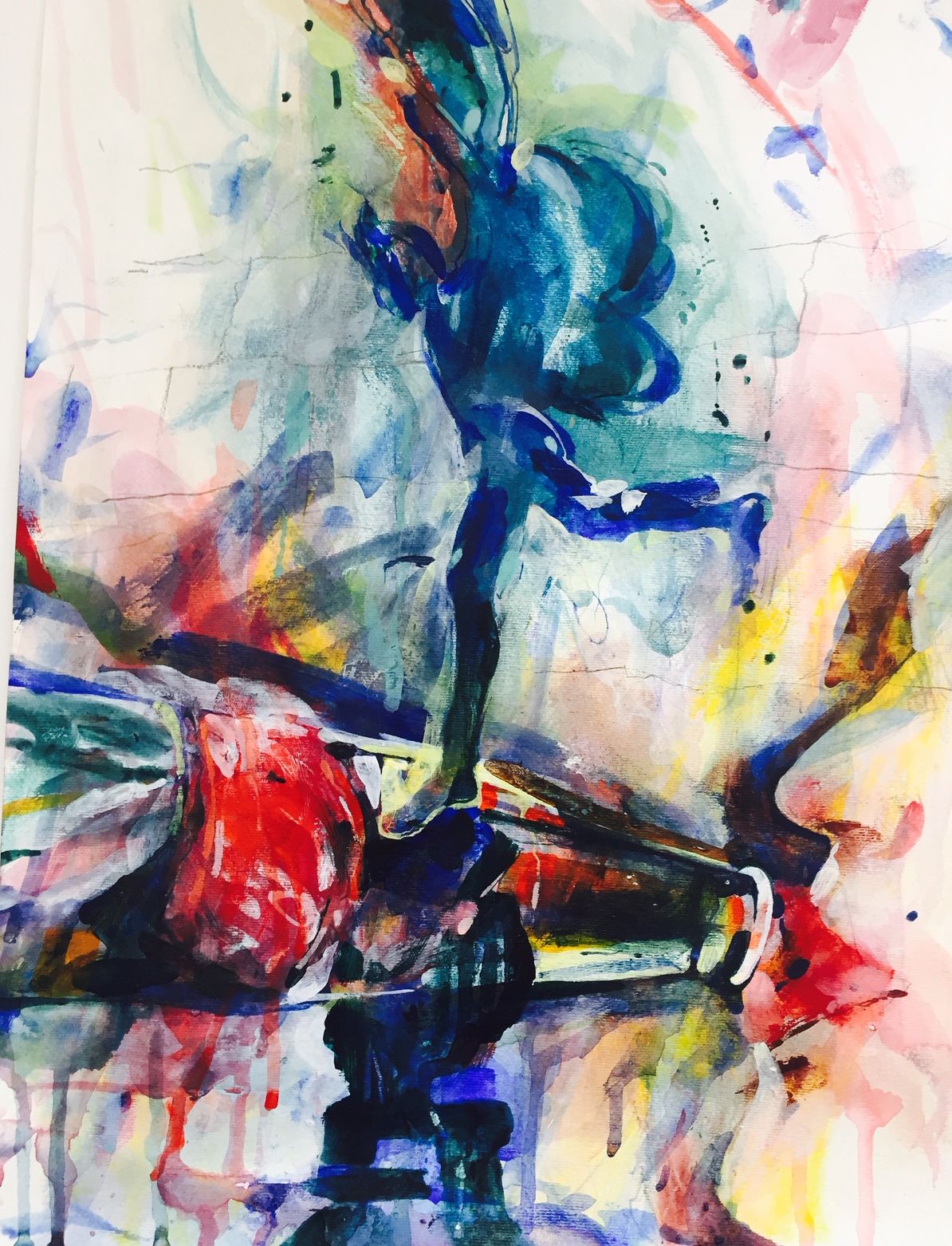
So why is the statue continuously referenced as Eros, when we know it to be of Anteros? "Ahh there is the controversy, which the iconographers still debate. I use the term ‘Eros’ as it has been attributed by popular ‘dumbing down’ perceptions of it. However, no-one should lose sight of the fact that it is ‘The memorial monument to the philanthropic efforts of The seventh Earl of Shaftesbury‘ by Alfred Gilbert. Ernst Gombrich, an authority on art, cites this when he refers to the statue as Eros and then goes on to explain the muddle and elusiveness of its meaning, i.e., the confusion over this through the passing of time and history". Donnelly’s interest in the statue's meaning continues to pervade and inform his visual responses.
A discussion of the artist's influences inevitably lead us to the topic of his day to day backdrop. Having spent much of his life in Liverpool he reflects warmly on the city. "Liverpool is sympathetic to artist; there is a culture of creativity and bohemian living that shapes people's attitudes and pride in where they live". That's not his experience of Chester. "There are sporadic bouts of activity, but it's provincial, and lamentable that the artistic brethren of this city are not given the opportunities and environment in which to flourish". As a Chester resident now, Donnelly faces the frustrations of other local artists seeking not only to make a living, but also fuel their creativity. Yet, as testament to the old practice of plugging away, high profile commissions are beginning to materialise.
In a 6ft painting for one client (fig 4), Donnelly aimed to capture a truly romantic and heroic image of Eros, where his stance and facial expression is one of indefatigable strength and personal integrity, utterly faithful to the ideal he is committed to. "The challenge here was to please, resolved simply, by painting as best I could without compromising my artistic principles. In 'Eros redolent in Piccadilly' I particularly identify with the heroic. As a boy it was Batman and Superman; now I'm more sensible about my choices". The commission led to a following and larger requests from clients in Chester, Wirral and Merseyside.
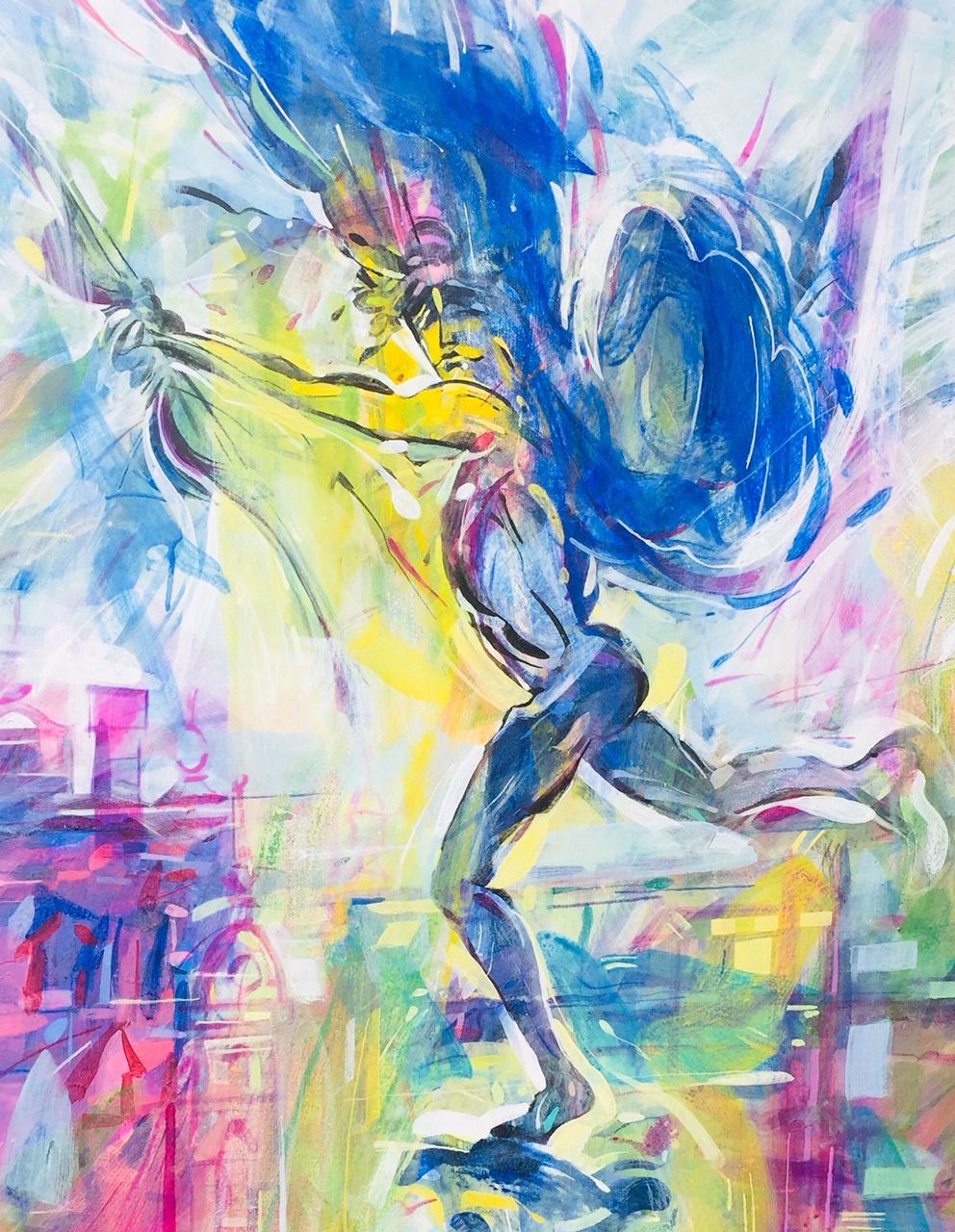
Donnelly also identifies elements of the heroic in 'El Bilbanito on his throne, with crimson boots' (fig 5). "It's an example of strands developing from Eros as a hero. El Bilbanito was a soldier and hero of the C. S. Forester novel ‘The Gun’. I chose to paint him exalted, adorned and draped in finery to celebrate his efforts". For Donnelly art can be many things. It can educate, instruct, edify, amuse, either in isolation or indeed in symbiosis. In 'Dancers in Piccadilly' it surely amuses and spreads joy. "This painting (fig 6) is born out of the influence of friend, professor and mentor, the late Victor Heyfron, whom I met as a student. Eros, stationed above, generates a spirit of joy as he brings apathetic tourists to their feet. It is these sentiments, underpinned by philosophical thinking, that really positioned Victor as my rudder over the years".
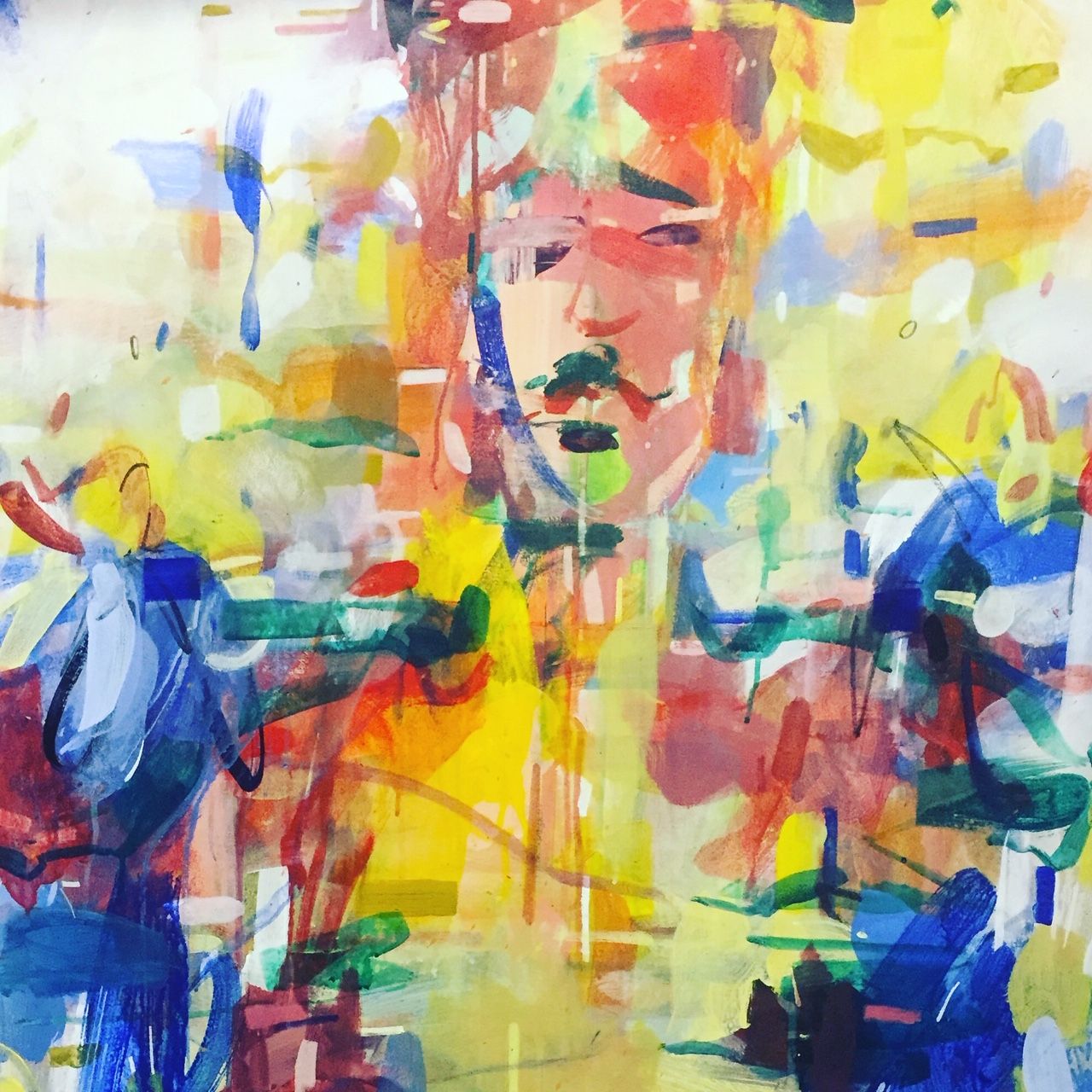
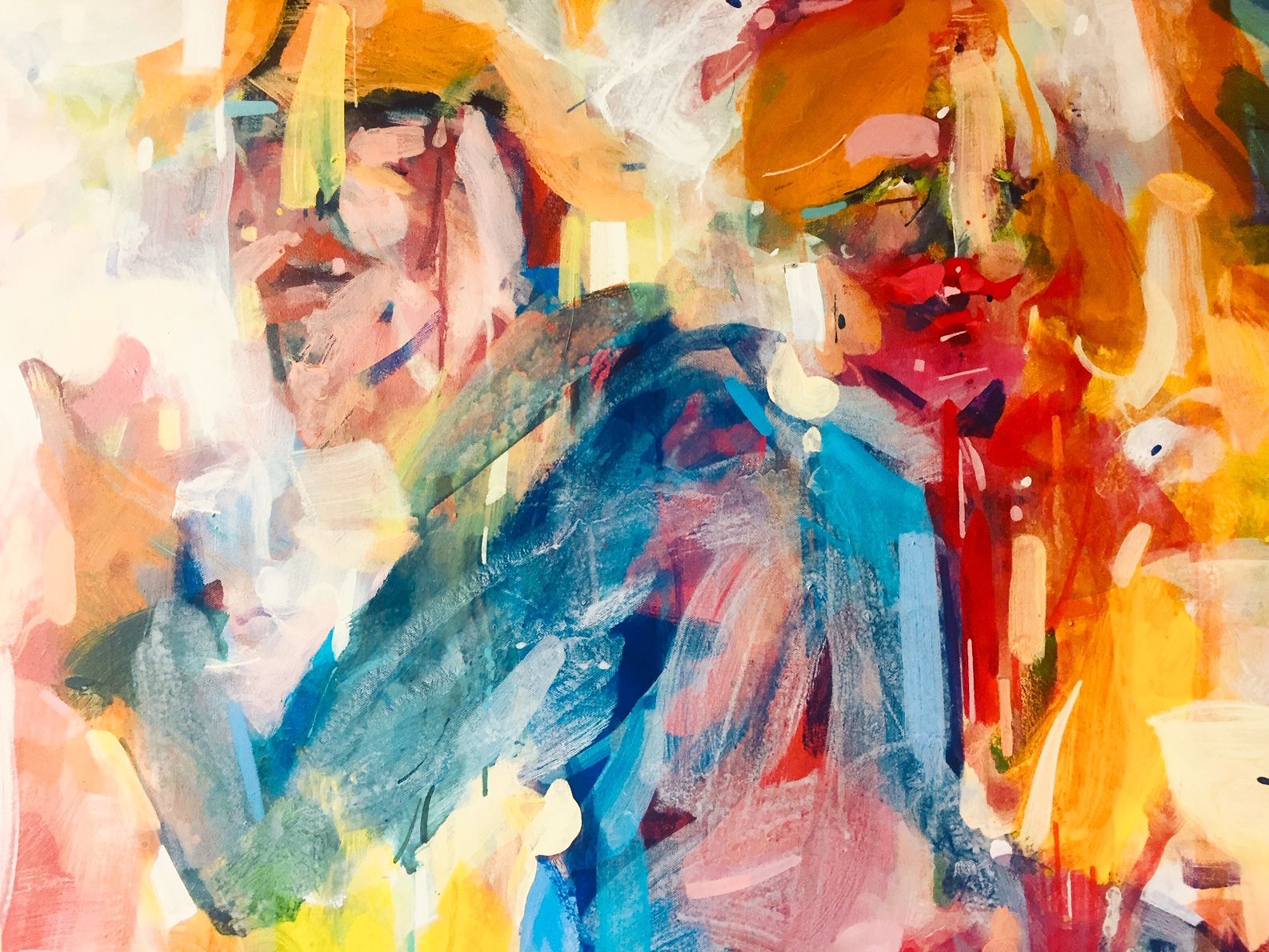
Beyond Chester the artist has engineered private commissions from wealthy CEOs from the corporate world. He is ambitious to re-visit his lecturing days through a series of presentations on issues surrounding art. Donnelly is currently enjoying a cultured life in London, feasting on galleries and theatre as a member of the prestigious Seven Stars organisation. It is only a matter of time before his work achieves national exposure.
To engage Donnelly on any cultural subject instantly reveals that art is not only his job, it's his life. One gets the feeling that there is nothing else on earth he would rather be doing than throwing paint on a canvas, seeking to understand himself, the world around him, and his place in it. Today, looking back on his journey, he is touched more so than ever by Picasso's statement: "We artists are indestructible, even in a prison, or in a concentration camp, I would be almighty in my own world of art, even if I had to paint my pictures with my wet tongue on the dusty floor of my cell".




